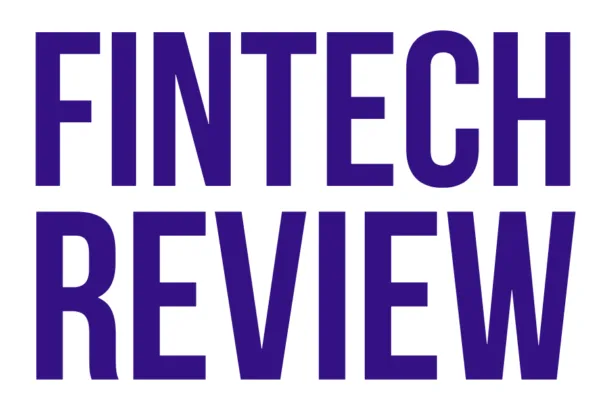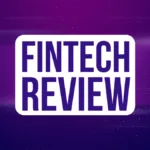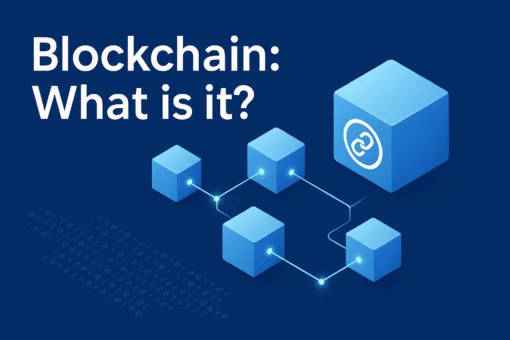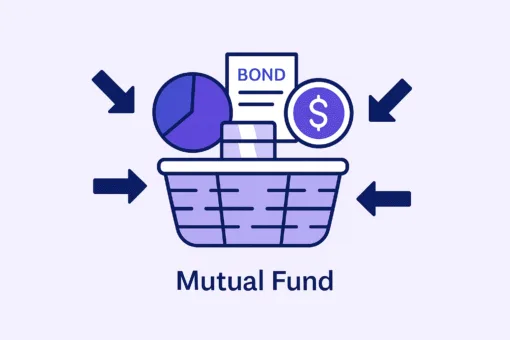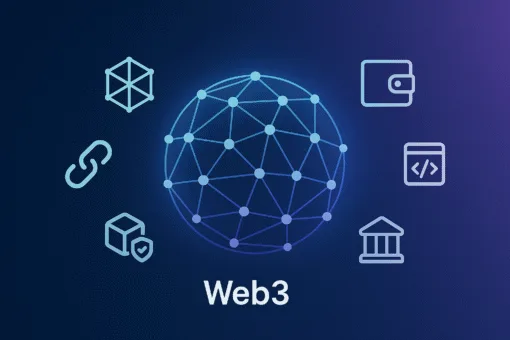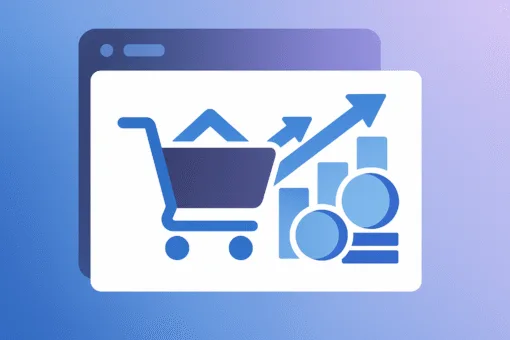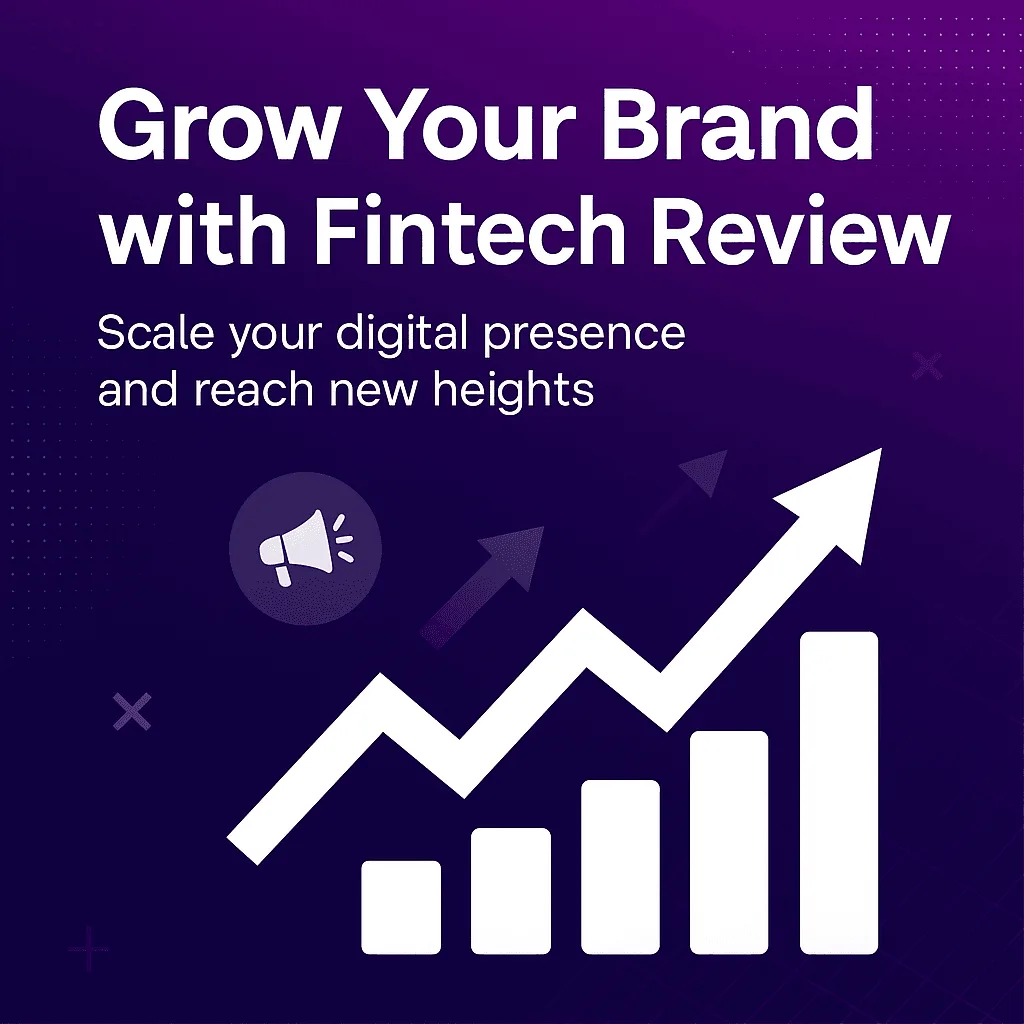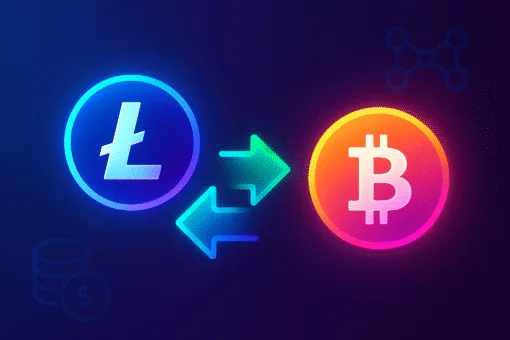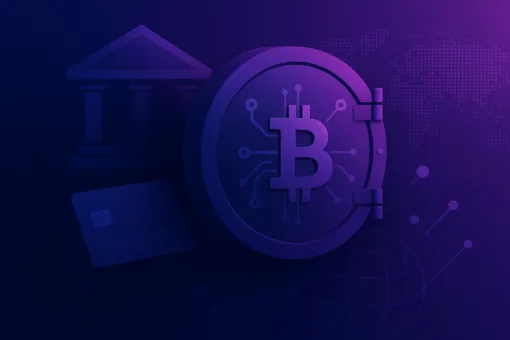Guest post by Antonio Lanotte from CFE Tax Advisers Europe, a Brussels-based association of European tax advisers, and Lorenzo Savastano from the Guardia di Finanza, an Italian law enforcement agency under the authority of the Minister of Economy and Finance.
Introduction
The most considerable application of blockchain, in the form of a distributed ledger technology (DLT), has the potential to transform well-established financial institutions and bring lower costs, faster execution of transactions, improved transparency, auditability of operations, and other benefits. Particularly relevant will be the disruption of payments for banks, as well as for customers, by reducing the cost and time taken to transfer money1. Blockchain is set to impact the world’s financial sector. The technology is ready to allow faster and more cost-effective processing of financial transactions. This is done through a decentralized, distributed ledger that grants its users with autonomy, and security. The power of eliminating intermediaries is the ability to lower transaction costs and take back control from powerful financial intermediaries.
Blockchain has the potential to displace any business activity built on transactions occurring on traditional corporate databases. Which is what underlies nearly every financial service function. Any financial operation that has low transparency and limited traceability is thus vulnerable to disruption by blockchain applications. For all these reasons, fintech is a new industry leveraging technology to improve activities in finance. With a focus on a more accessible service to the public.
Setting the scene for supply chain finance…
Supply Chain Finance, on the other hand, is one of the most revolutionary tools of available to the fintech industry. Its main contribution is the simplification of the integration of physical and financial flows. This is due to blockchain technology and IoT. As well as the automation of the process, leveraging artificial intelligence (AI) and Big Data Analytics. Furthermore, these technologies can help reduce many supply chain financial risks. Among them, we can find operational risks. For instance, the risk of double financing or the risk of not obtaining the desired output. As well as acting as a real propulsion engine for all the operational aspects.
Governments, financial services companies, and fintech startups form an ecosystem. All the participants of this ecosystem face different challenges and opportunities. Which allow for a more dynamic and complex landscape along with its continuous evolution. In addition, the financial service industry is moving from the exploration phase to the application phase. It is therefore very important for the financial institutions and the experts to understand the role of disruptive technologies, in order to take advantage of this financial revolution.
Legislative background and operative tools: PSD2 and regulatory sandbox
The PSD22 is a European regulation for the electronic payment services. It seeks to make payments more secure in Europe, boost innovation and help banking services adapt to new technologies. PSD2 supports the increasing importance that Application Program Interfaces (API’s) are acquiring in different financial sectors.
Moreover, the PSD2 regulates and harmonizes two types of services that were already in existence when the first PSD was adopted in 2007. But have become more popular in recent years; the Payment Initiation Services (PIS); and the Account Information Services (AIS). (AIS) includes the collection and storage of information from a customer’s different bank accounts in a single place, allowing customers to have a global view of their financial situation and easily analyse their expenses and financial needs3.
Meanwhile, in Payment Initiation Services (PIS), other providers facilitate the use of online banking to perform payments online. These services help to initiate a payment from the consumer’s account to the merchant’s account. These services do it by creating an interface that bridges both accounts. It then fills in the information needed for the bank transfer such as amount of the transaction, account number and notification. And then informs the store of the transaction. PSD2 also allows clients to make payments for the benefit of a third party from a bank’s app by using any of the client’s accounts.
Introducing Strong Customer Authentication…
The other major development in PSD2 is the introduction of new security requirements known as Strong Customer Authentication (SCA)4.
On the operative side, the “sandbox” can be defined as a test environment in which the admitted companies can operate in a controlled environment under the supervision of the competent authorities. From this point of view, the regulatory sandbox has clear analogies with the IT sandbox. It indicates a test and control environment in which to verify the functionality of a software intended for production. The regulatory sandbox allows companies to develop innovative solutions in a controlled environment. All the while staying in contact with the real market.
The goals are the following:
- Facilitate the testing phase of goods and services in a controlled environment;
- Reduce the so-called time-to-market and potentially reduce its costs;
- Support companies in identifying the best safeguards to protect users;
- Expedite access to financial resources.
Blockchain and AI for Fintech: the Digital Disruption

Payments and cross-border transactions have always been a slow and expensive process. Blockchain endeavours to change that, as it allows near real-time, point-to-point transfer of funds. This will also translate to increased profitability due to less operational costs and over-heads. This will have major institutional and political implications for unbanked populations in unstable economies.
Fintech is a new industry using technology to improve activities in finance. Fintech consists of both established organizations and startups. It is aiming at enhancing the services currently provided by existing companies in the financial sector. And by redefining and creating new applications, processes, products and business models. The major innovative and revolutionary technologies to support the incoming disruption within the traditional banking system are mainly: blockchain5, AI and machine learning. Moreover, the constant dematerialization of business processes is one of the main challenges of the current decade.
For example, the electronic invoicing does6 not only mean the production and management of electronic invoices and often represent a part of the entire financial value chain and supply chain dematerialization (for its non-commodity component). Indeed, the two value chains are now even more integrated and recent studies have shown significant monetary savings. The research question is now to identify a reliable set of indicators that are also able to capture and to synthesize the interactions between the Financial Value Chain and the Supply Chain. The scope is to come up with a revolutionary model of company score and analysis based on real time digital information driven mainly by the e-invoicing system7.
A clear goal in sight
The ultimate goal is to provide valid and actual support to all the relevant stakeholders. As well as mathematical and statistical tools to evaluate the needs in terms of imminent cash flow throughout the supply chain. But most importantly, to forecast solid plans of credit in case of future material investments.
Utilizing blockchain technology allows for greater trade accuracy, and a shorter settlement process. Today, we have commercial banks, payment institutions (such as Swift), investment banks, hedge funds, private equity and a host of others. They all carry out various functions. For example, providing businesses with access to capital, underwrite deals, hold deposits, lend money, confirm transactions both, and exchanges, etc. Blockchain will likely solve identity management issues, and the smart contracts will streamline the process. Blockchain can also improve the real-time visibility of the transaction to institute regulatory and customs oversight8.
On the other hand, AI & machine learning will significantly improve fintech by increasing the accuracy and personalization of financial services. For instance, payment, lending, and insurance services while also helping to discover new borrower pools. What organisations need is a new tech stack that can adapt to a changing market and customer requirements in real-time. AI & machine learning are proving to be very effective at interpreting and recommending actions based on real-time data streams.
A Digital Single Market will lead to decentralised responsibilities and taxation

The application of blockchain, in the form of a distributed ledger technology (DLT), has the potential to transform well-established financial institutions and tax administrations by simplifying complex processes such as annual tax returns, VAT/GST, immovable property sales taxes, including the introduction of a Digital Euro9, ensuring faster execution of transactions, improved transparency, auditability of operations, and possibly lowering costs (after a first implementation phase). It is therefore high time for the EU to create the conditions for a “Digital Single Market”, as a corollary, with “decentralized” responsibilities. The “Digital Single Market” can be established on a blockchain-based network, a public “permissioned”10 distributed ledger, in which all the stakeholders, in particular Revenue Agencies, Customs, peripheral tax offices and agencies or similar will have a defined role.
Each entity will function according to their respective fields of responsibilities, for example by giving consensus, in other words by effectively checking and monitoring the information streamline throughout the “Digital Value Chain”, in matters of indirect and direct taxation. Tax or other competent authorities the necessary information to proceed are thus transmitted. AI-run mechanisms may help collect relevant information to issue tax returns or similar acts. And eventually establish a profile of the taxpayer. The Digital Transformation of the Public Authorities may lift most of the tax and administrative task burdens for the external stakeholders such as companies. That is in light of “decentralization” and “tokenization” of the process. The digital chain of events will bring transparency to the whole process while granting its users autonomy and security. That is in addition to cost-effectiveness and time saving.
Fostering innovation…
Innovation companies and MNE’s today are moving items of value across blockchain networks. The process of “tokenization”11 has become considerable in exchanging information. For example, the use of blockchain for issuing digitized invoices allows value-embedded assets to be sent across multiple network participants. In turns, it ensures that all parties receive the same information at the same time. Everything is recorded on the blockchain ledger, which increases trust and transparency between counterparts. Therefore, building an extensive network in the form of a Public, Permissioned Blockchain will give selective access. In other words, properly permissioned admission, to potentially the entire value chain.
By lifting responsibilities from the companies which have been granted access to, respectively by empowering governmental bodies to a public and permissioned Blockchain, both taxpayers and authorities can focus on their respective businesses and obligations, and also anticipate their future objectives and projects by using “smart contracts”. Benefits are the secure and transparent streamline of information between the relevant counterparts. As well as a process that can be managed, checked and audited at the same time. By eliminating intermediate layers in the transaction process, the Blockchain lowers costs and give a direct control over the operations. The technology has the potential to displace any business activity running transactions built on traditional databases. Which underlies today nearly every financial and fiscal service function.
In order to be successful and effective, the creation of the “Digital Single Market” will require several baseline conditions, that is all relevant parties benefit from the implementation of the large-scale, innovative and ground-breaking system, in terms of a fairer and distributed taxation scheme, efficient reporting tools, transparent streamlined information and the capacity for precise calculation of taxes. Keys are the identification and definition of the markets, the access and exit points on the value chain, and the target data collection for tax purposes.
The Supply Chain

Supply chain management involves the flow of goods and products from the initial stage to the final stage. Being a major part of many industries, proper functioning of a supply chain is crucial for businesses. Supply chain management is not a one-person job to do and thus, there are different entities that are taking part. Smart contracts in the supply chain can record ownership rights while the products are transferred through the supply chain. Everyone in the network can track the location of the product at any given time. The final product can be checked at each stage throughout the delivery process until it reaches the end customer. If an item is lost into, the process, smart contracts can be used to detect its exact location12.
Moreover, if any stakeholder fails to meet the contract terms, it would be transparent for the whole system to see. Smart contracts bring transparency to the overall supply chain system. In addition, smart contracts have certain advantages for many industry sectors. For example, reducing overhead costs, providing transparency, and saving time. While they are more reliable, secure, efficient and trustworthy as compared to paper contracts, care needs to be taken to avoid the risks of code corruption13.
Supply Chain Finance
Supply Chain Finance is the set of solutions that allows a company to finance its working capital, leveraging not only on its economic, financial or business characteristics, but also on the role it plays within the supply chain in which it operates (production chain)14.
In the current climate, SME’s and growth businesses in particular, find maximizing liquidity to be a challenge15. In the UK, for example, growth businesses have not found it straightforward to access funding from the business interruption loan scheme during the COVID-19 pandemic. At the same time, many smaller businesses find that they lack the credit rating required to access bank finance. Therefore, they instead can tap into securities within their supply chains. That’s especially true in emerging markets.
“SCF” was traditionally seen as a solution for bigger companies with solid credit history. However, the greater availability of digital options is creating opportunities to help SME’s access working capital. Whilst driving growth in SCF as a type of finance. In 2018, SCF saw 25% growth in the DACH region alone. Meanwhile, growth was 23% in the US LATAM region in the second half of 2019. The entry of new technological players in the market and the increasing digitalisation of the incumbents expands the fintech world. Therefore, the offer gradually moved to important and very innovative solutions, such as supply chain finance financial institutions.
Below we can find a few examples:
- Advanced Reverse Factoring (ARF) (with platform): like Reverse Factoring, it is based on the opportunity for suppliers to have their invoices paid with exponentially quicker (approximately 7-10 days) and at cheaper rates, as suppliers receive liquidity at a cost commensurate with the risk of the buyer, who presents the suppliers to the financial institution. The innovation of the ARF, is the fact that the disbursement of the credit takes place in the presence of more operational information (e.g. data on the operational performance or sustainability of the suppliers), against a lower risk and a consequent reduction in the cost of the loan. It is based on a technological platform where electronic invoices form the mainstream of digital information flows. It is on a permissioned blockchain, in which relevant stakeholders can monitor the whole process. And where smart contracts are enabled. The electronic invoices are relating to the customer-supplier relationship transaction, and allows the supplier to select which invoices to discount;
- Inventory Finance: traditionally, it refers to the short-term financing of stocks through a credit line. More recently, solutions are also identified as Inventory Finance, in which a Logistics Service Provider purchases goods from a supplier. It is often in partnership with a financial institution. It owns the goods for the duration of transport and storage. That is optimizing trade receivables and payables of the supplier and his customer;
- Dynamic Discount: technological solution that allows the customer to pay in advance for a discount by the supplier on the invoice amount proportional to the days in advance, dynamically agreed for each transaction. Payments can be brokered by financial providers;
- Invoice Auction: a “marketplace” for the advance invoice based on a technological platform that allows third parties with available funds (financial institutions, companies, and individual investors) to invest in invoices issued by companies, according to an auction mechanism between several possible buyers;
- Purchase Finance: conceptual extension of the Invoice Discount (advance invoice) to all documents that belong to the Order Cycle and that precede invoicing (on all, Purchase Orders, Order Confirmations, or Transport Documents and Shipping Notices).
Decentralized Finance and Non-Fungible Token

Decentralized finance (DeFi) may be defined as the “transformation of traditional financial products into products that operate without an intermediary via smart contract”16.
From the aforementioned definition, it is possible to draw some key-features of DeFi:
- Decentralisation: that could be intended as the facilitation of financial services without the need of trusted parties, since DeFi does not rely on central financial intermediaries such as brokerages, exchanges, or banks to offer traditional financial instruments;
- Transparency: DeFi protocols are built on blockchains, typically Ethereum. Therefore, in DeFi, transparency could be applied to financial data and to smart contracts. The latter are programs stored on a DLT that run when predetermined conditions are met. Referred to smart contracts, transparency means that a public DLT allows anyone to review the code of the underlying software. It allows any individual to be able to consciously choose to use the financial service offered by a smart contract, by reviewing its own code;
- Automation of business processes: that derives from the usage of the above-mentioned smart contracts, which allows a more cost-efficient business process, without the need for an external authority.
The powerful concept behind smart contract is that it allows the user to trustlessly encode rules for any type of transaction. And even create scarce assets with specialized functionality. That entails that many of the clauses of traditional business agreements could be shifted to a smart contract, which “not only would enumerate, but algorithmically enforce those clauses”17.
There is more to it…
Furthermore, a key-feature of DeFi is its own “composability”, that refers to “the ability to build a complex, multi-component financial system on top of crypto-assets”18. The underpinning idea around composability could be expressed by using an enlightening metaphor: ‘money Lego’. As for the well-known Danish toys, in DeFi’s structure, blockchain provides a foundation on which financial services can be built, just like a bin in which the ‘Lego’ components reside (i.e. the financial services)19.
The last-mentioned hallmark of DeFi implies that components can be easily connected. That is in stark contrast to siloed and centralized payment systems. They are publicly available, and can be in the meantime re-used to create new financial services.
This leads to the another most prominent quality of DeFi: “flexibility”, meant as the ability to be easily modified by blockchain’s community, thanks to both lack of regulations and the versatility underlying the software of smart contracts. Following again the “Lego analogy”, flexibility in DeFi implies that “blocks” can also be modified in size, colour, and shape (that means that it also easily can be used for fraudulent activities).
Decentralization at its core…
In essence, DeFi is therefore a blockchain-based form of finance built using decentralized technological tools. It is characterized by being open, permissionless, disintermediated and with no single point of failure. DeFi platforms, which include projects like Maker, Aave, Compound, Uniswap, allow people to lend or borrow funds from others, speculate on price movements on a range of assets using derivatives, trade cryptocurrencies, insure against risks, and earn interest in savings-like accounts20.
For instance, Aave presents itself on its website as “a decentralised noncustodial liquidity market protocol where users can participate as depositors or borrowers”. Depositors provide liquidity to the market to earn a passive income. While borrowers are able to borrow in an over-collateralised (perpetually) or under-collateralised (one-block liquidity) fashion.
Depositors share the interests paid by borrowers, corresponding to the average borrow rate times the utilisation rate. As evident, the higher the utilisation of a reserve, the higher the yield for depositors. Each asset has its own market of supply and demand with its own APY (Annual Percentage Yield). This is the yield/interest after a year, which includes compounding interest and which evolves with time.
In detail, the funds are allocated in a smart contract. Its code is public, open source, formally verified and audited by third party auditors. A user of the platform is able to withdraw its funds from the pool on-demand or export a tokenised (named “aTokens”) version of its lender position, which finally can be moved and traded as any other cryptographic asset on Ethereum.
That being said, it is now worth to pointing out that from an Anti-Money Laundering and Counter-Terrorism Financing (AML-CTF)’s compliance perspective, DeFi represents a “wild card”.
DeFi is off the radar for now…
Notably, DeFi is not included in the Virtual Asset Service Provider (VASP’s) definition encompassed by Guidelines issued by Financial Action Task Force (FATF), the intergovernmental policymaking body that monitors and sets international standards for AML-CTF’ purposes through its recommendations to governments. To understand the relevance of the implementation of AML-CTF’s FATF Recommendation within the fintech sector, including the new phenomena at issue, it is important to briefly retrace the main progresses made in this field in recent years.
Initially, in October 2018, the FATF updated its Standards. It was to clarify their application to virtual assets and virtual asset service providers. It did so by amending Recommendation 15 and adding two new definitions to the FATF Glossary, namely:
- “virtual asset” (VA) intended as a digital representation of value that can be digitally traded, or transferred, and can be used for payment or investment purposes;
As a result, virtual assets do not include digital representations of fiat currencies, securities and other financial assets that are already covered elsewhere in the FATF Recommendations:
- “virtual asset service provider” (VASPs), that means any natural or legal person who is not covered elsewhere under the Recommendations, and as a business conducts one or more of the following activities or operations for or on behalf of another natural or legal person:
- exchange between virtual assets and fiat currencies;
- exchange between one or more forms of virtual assets;
- transfer of virtual assets;
- safekeeping and/or administration of virtual assets or instruments enabling control over virtual assets; and
- participation in and provision of financial services related to an issuer’s offer and/or sale of a virtual asset.
Further precisions introduced recently
In June 2019, the FATF issued a further guidance for a risk-based approach (RBA) to virtual assets and VASPs. On that occasion, the International Body adopted and issued an Interpretive Note to Recommendation 15 on New Technologies (INR. 15) that describes how countries and obliged entities must comply with the relevant FATF Recommendations to prevent the misuse of virtual assets for AML-CTF’S purposes21. For this purpose, FATF finally clarified that the scope of the FATF definition includes both virtual-to-virtual and virtual-to-fiat transactions or financial activities or operations. Moreover, in assessing if a specific activity or entity falls within the scope of the definition of VA or VASPs and is therefore subject to AML-CTF requirements, countries should consider the functionality or the financial activities that the VA service facilitates in the context of the covered VA activities.
Inter alia, the FATF made clear that the main supervisor of the VA’s related activities is the Country that has incorporated the Virtual Asset Service Provider as a company, regardless of the location of the server or where it does business.
Furthermore, the 2019 Guidance specifically describes the application of the FATF Recommendations to Countries and competent authorities. As well as to VASPs and other obliged entities that engage into VA activities. That is, including i.a. financial institutions such as banks and securities broker dealers.
Do not forget compliance…
In particular, with regard to AML-CTF compliance rules, the Guidance highlighted that VASPs, and other entities involved in VA activities, need to apply all the “preventive measures” set out in FATF Recommendations 10 to 21. Among other, these rules include customer due diligence, record keeping obligation and reporting of suspicious transactions. That is at the time of on-boarding and on an ongoing basis in relation to the customer.
In addition, the Guidance explains how these obligations should be fulfilled in a VA context. It also provides clarifications regarding the specific requirements applicable regarding the USD/EUR 1,000 threshold for VA occasional transactions.
Peer-to-peer
With regard to peer-to-peer trading online platforms, 2019 FATF Guidance contends that the platform may not constitute a VASP as defined above as far as the platforms. These platforms enable buyers and sellers of VAs to find one another:
- only provide a forum where counterparties of VAs can post their bids and offers (with or without automatic interaction of orders); and
- the parties themselves trade at an outside venue, either through individual wallets or other wallets not hosted by the trading platform.
However, where the platform facilitates the exchange, transfer, or other financial activity involving VAs, then the platform is a VASP conducting exchange and/or transfer activity as a business on behalf of its customers. Including by purchasing VA’s from a seller when transactions or bids and offers are matched on the trading platform, and selling the VA’s to a buyer.
Currently, it is scheduled a further guidance on RBA approach to VA ecosystem. That is inspired by the advent of new disruptive technologies in financial services sector, including DeFi innovative platforms.
Looking at several issues
The FATF recognized the need for further clarification on the application of the standards to new technologies and providers. That is, given the development of additional products and services. As well as the introduction of new types of providers in this space. Therefore, the forthcoming guidance identified five main issues where further FATF Guidance and sustained outreach and collaboration are strongly recommended. These areas are related to:
- a wider and more comprehensive definition of virtual asset and VASPs. In this regard, FATF recognises there could be greater clarity about what approach jurisdictions should take if a new asset is developed that could be categorised as a traditional financial asset under the revised FATF Standards but is based on the technology associated with virtual assets;
- peer-to-peer transactions and un-hosted wallets, since this taxonomy of transfers of virtual assets, without the use or involvement of a VASP or financial institution, are not explicitly subject to AML/CFT obligations under the revised FATF Standards;
- so-called stablecoins, that at present may be a virtual asset or traditional financial asset under the revised FATF Standards;
- licensing and registration of VASPs. As said above, under the revised FATF Standards, jurisdictions must regulate VASPs created in their jurisdiction. But more clarity is needed. That is, considering that countries can choose to expand their coverage to VASPs offering services to their citizens. Or with operations in their jurisdiction;
- implementation of the travel rule which mandates that VASPs obtain, hold and exchange information about the originators and beneficiaries of virtual asset transfers. That is a key AML-CFT measure.
The FATF is updating its 2019 Guidance on virtual assets and VASPs to address these five areas. As well as to enhance international co-operation amongst VASP supervisors.
Disruptive innovation
Regarding DeFi’s disruptive innovation in finance services sectors, the FATF recognizes that VASP activities, the exchange or transfer of virtual assets, may also take place through decentralized exchanges. Such as software programs that are Decentralized or Distributed Applications, or DApps, that operate on a peer-to-peer network of computers running a blockchain protocol.
Currently, a DApp itself (i.e. the software program) is not a VASP under the FATF standards, as the Standards do not apply to underlying software or technology (by virtue of the technology-neutrality principle).
In this respect, it is relevant to note that already the above-mentioned 2019 FATF Guidance pointed out that when DApps facilitate or conduct the exchange or transfer of value. Whether in VA or traditional fiat currency. The DApp, its owner/operator(s), or both may fall under the definition of a VASP.
As a consequence, the Draft Guidance recognizes that entities involved with the DApp may be regarded as VASPs under the current FATF definition. Since, the owner/operator(s) of the DApp conducts the exchange or transfer of VA’s as a business on behalf of a customer. Regardless if it is a natural or legal person. Furthermore, the owner/operator is likely to be a VASP. Even if other parties play a role in the service or portions of the process are automated.
Likewise, a person that conducts business development for a DApp may be a VASP. That’s when they engage as a business in facilitating or conducting one of the five functional activities previously described on behalf of another. In short, the FATF’s standpoint is that the decentralization of any individual element of operations does not eliminate VASP coverage. That is, if the elements of any part of the VASP definition remain in place.
Nonetheless, the FATF consulted on draft revisions in March-April 2021. And the final release of the revised Guidance is expected by November 2021.
Conclusion
It may be worth pointing out that some inherent qualities of DeFi protocols could already allow them to provide the needed certainty to identify the beneficial owner of a financial transaction. This is the main goal of the AML-CTF rule system.
In particular, it is important to emphasize that every single transaction that occurs through a DeFi protocol can be tracked. Thanks to the cited transparency assured by blockchain. This is a clear boon of this new fintech software compared to the traditional financial system. DeFi transactions can be seen in real time and the information is always available to Authorities and other obliged entities. Which is making easier the ability for risk assessment of the protocol and the transactions.
Moreover, a more comprehensive rule system borne by companies that manage the platforms where DeFi protocols run. For instance, by categorising them as obliged entities for AML-CTF compliance’s purposes. It could have a positive effect in preventing money laundering of ill-gotten profits through them.
By doing so, a more compliance burden on platforms could assure some preventive measures requested by the FATF for AML-CFT purposes to other financial institutions. Such as customer due diligence, record keeping, and suspicious transaction reporting. That is combined with the strong transparency of blockchain.
Widespread adoption

Preserving DeFi is crucial for a “popular” advance of technology industry in financial services, also for the sake of reaching a broader financial equity and fairness.
In fact, given the absence of “minimum requirements” for DeFi, individuals who don’t have access to traditional financial institutions are able to gain financial autonomy by engaging in transactions on DeFi protocols, which only requires access to the internet.
As noted by some authors, however the DeFi’s vision goes beyond the “simple” decentralization of finance, enabling the embedding of local compliance standards and customs which tend to reduce costs of access to financial services: the ultimate goal is to develop systems which use technology to eliminate borders, jurisdiction and the necessity of centralized control including governments22. In one single word, that has seemingly the same form but possesses a wider horizon in the background: DeFi is the promise and premise for another DeFi, namely the ‘Democratization’ of Finance.
References
1 “How the Blockchain Will Impact the Financial Sector”
2 “Frequently Asked Questions: Making electronic payments and online banking safer and easier for consumers”
3 “Payment Services Directive: frequently asked questions”
4 “Everything you need to know about PSD2”
5 Blockchain is a “distributed ledger technology” because it is formally based on a technology that reduces errors to a minimum. It also increases efficiency, reproduces the individual movements (blocks) in real time and in a chronological way. It will support smart contracts that automatically regulate payments, adjust accounts, and coordinate records among multiple organizations. Due to its nature and great capabilities, Blockchain applications have shown great opportunities, not limited solely to finance. It can be applied to various industries, and improve many departments within and organizations.
6 “e-Invoicing”
7 “The Potential of electronic invoicing in B2B Transactions” by Ksenija Cipek
8 “Blockchain Innovation in Financial Sector” by Amna Ahsan
12“How Blockchain technology could change our lives”
13 “The Impact of Blockchain Technology on Finance: – A Catalyst for Change” by Michael Casey, Jonah Crane, Gary Gensler, Simon Johnson and Neha Narula
14 “Supply Chain Finance Fundamentals”
15 “Coronavirus (COVID-19): SME policy responses”
16 “Identifying key non-financial risks in decentralized finance on Ethereum blockchain“
17 “DeFi and the Future of Finance” by Harvey, Campbell R. and Ramachandran, Ashwin and Santoro, Joseph
18 “The decentralized financial crisis” by Lewis Gudgeon, Daniel Perez, Dominik Harz, Benjamin Livshits, and Arthur Gervais
19 Lewis Gudgeon et al., see above.
20 “Why ‘DeFi’ Utopia Would Be Finance Without Financiers: QuickTake“
21 “FATF draft guidance targets DeFi with compliance“
22 “Decentralized Finance (DeFi)” by Zetzsche, Dirk Andreas and Arner, Douglas W. and Buckley, Ross P.
